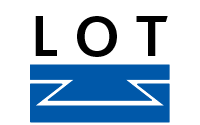SMART
Contact:
Dr. Michael Vogel, +49 271 740 2594, michael.vogel@uni-siegen.de or michael.vogel@cern.ch
SIS Multilayer Structures for Applications in Superconducting Radio-Frequency Technology (SMART)
 | Verbundforschungsprojekt: |
|
Overall scope of the project
For more than a decade, superconducting radio frequency systems (srf cavities) continue to gain importance as one of the key technology for modern accelerators. Research and development efforts carried out over many years have led to dedicated recipes for optimum construction and treatment of srf cavities made from pure niobium, yielding a reliable performance and high accelerating fields as successfully demonstrated in large scale facilities like the European XFEL. Single resonators have already shown field gradients close to the performance limit of niobium.
In order to achieve groundbreaking improvements in srf technology, new concepts for further enhancing accelerating fields and cavity performance have to be conceived, addressing the challenging demands posed by the planned upgrades of existing or the construction of future accelerators. Besides the currently worldwide pursued approaches, aiming at further reduction of RF losses of niobium in continuous-wave operation which are still of high importance, detailed investigations and characterization of the srf potential of next generation materials and structures should be started. These materials have the potential to pave the way to more compact and efficient next generation accelerators. This general goal sets the scope of this research project, which aims at a significant reduction of the RF losses at nowadays-usual accelerating fields and an additional increase of the maximal achieving field exceeding the limit set by pure niobium.
In order to achieve both points, the project focuses on systematic investigations of the properties of new surface structures of niobium-samples created by a coating with mono- or multilayers of varying composition and thickness. First experimental studies at HZB already demonstrated promising results of such structures, having reduced the BCS resistance. These benefit from progress in coating procedures. In addition, recent theoretical studies give a better understanding of such systems and allow a dedicated tailoring of layered structures.
The project aims at a better understanding of these structures; how to engineer and tailor the desired interfaces and layers with modern coating techniques and to characterize these with state-of-the art RF techniques and in-depth material characterization. Optimized standards in preparation and processing are to be developed, shedding light on the yet to be charted map of multilayer structures in srf. Initially, samples are to be characterized over a wide parameter range for a good understanding of the intrinsic multilayer performance, without having to deal with the difficulty of coating complicated cavity struc-tures. For this, new dedicated test setups are to be developed that are amenable to coating. Ultimately the most promising multilayers and techniques are to be expanded upon to yield optimized recipes for full cavity coating. For the development of the new sample chambers and for timely characterization of the SIS samples, HZB’s measurement contribution with the quadrupole resonator thus takes on a pivotal and cross-linking role in the Verbund.
Scientific and technical objectives of the project
The aim of this work is an improvement over the performance of existing superconducting niobium cavities. It focuses on the investigation and implementation of so-called SIS (superconductor - insulator - superconductor) structures in close collaboration with DESY and HZB, taking benefit from the outstanding and worldwide acknowledged expertise of the Helmholtz centers DESY and Berlin in srf research and technology. The main objectives are:
- A study on the optimal composition of elements used for coating and determination of the key parameters of two different promising coating processes - atomic layer deposition (ALD) and physical vapor deposition (PVD) - w.r.t. layer thickness and stoichiometry, interface roughness and homo-geneity on samples.
- The design and installation of a full-metal furnace for samples and single-cell cavities. Cleanliness and surface roughness of niobium used for srf cavities and coating samples are demanding. The addition of a high-vacuum furnace to the existing infrastructure is a mandatory measure for the optimal preparation of the samples.
- A system for flexible and rapid turn-around srf characterization of the layers, which is essential to characterize the multilayers over a wide parameter range (e.g., frequency, temperature, RF field, DC magnetic field) to understand their performance and identify the most effective coating techniques. The core method of the infrastructure to perform these srf characterizations (so-called quadrupole resonator) is available at HZB, and has been in operation for 6 years. A second QPR is planned for construction by University of Hamburg. Further development of the existing quadrupole resonators is indispensable for the success of the project. It is already apparent that the sampleholders have to be a major redesign to enable ALD coating. The current sample holders require welding and mechanical cutting of the sample plate, which can pollute the sample and falsify the measurements, in the worst case even destroy the delicate thin film samples. In order to repeatedly analyze, treat and test samples, a mechanically detachable sample holder design, compatible with RF fields, is essential.
- A surface-impedance boundary condition dedicated to multilayer SIS structures will be developed and inserted in a standard 3D finite-element field simulator. This simulation tool will enable the improvement of the existing quadrupole resonators, the design of the detachable sample holder and the prediction of the performance of the single-cell cavities with the new coating technique.
Once a stable process for samples is established and characterized using the HZB QPR, a first coating of a single-cell cavity as a breakthrough is planned.
